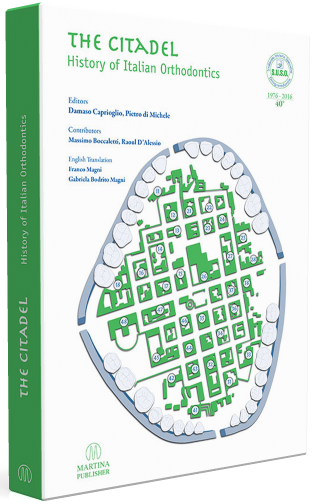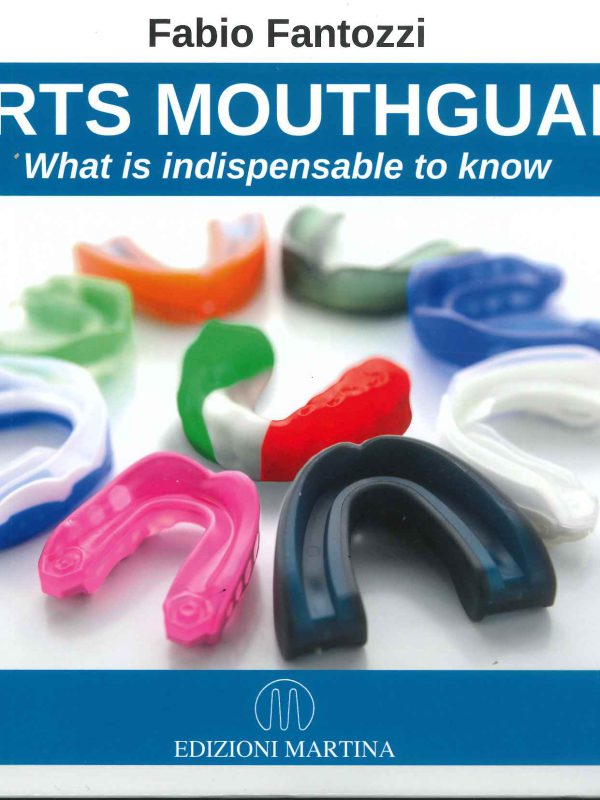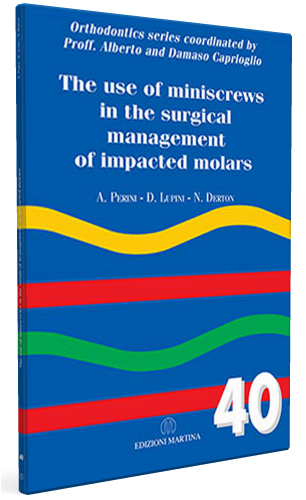Reading “La Cittadella – La Storia dell’Ortodonzia Italiana” has been both a great pleasure and a source of inspiration: it is a wonderful book tracing the fascinating development of orthodontics in Italy fromits beginnings to the present day, and probably unique in its endearingly personal and professional tribute to the many colleagues who have put their heart and soul into Italian orthodontics. I had the great fortune to witness at first hand the advances being made in Italian orthodontics at three EOS conferences in Italy (1984 in Florence, chaired by FrancoMagni; 1992 in Venice, chaired by B.Miotti; and 2002 in Sorrento, chaired by RobertoMartina).At all of these events, I saw how Italian colleagues were consistently receptive to ideas and approaches emanating from outside the country and keen to learn from and build on the work of others in their field. Over many years, Italian orthodontics has consequently been influenced by Scandinavian, Dutch, German, and North American practice, and there are now many distinguished Italian colleagues willing to share their wealth of experience and, acting as highly sought-after speakers, pass it on to others all around the world.
I look back very fondly on the time I, as President of EFOSA (the European Federation of Orthodontic Specialists Associations), had the pleasure of engaging in close personal and professional contact with the world of Italian orthodontics. Back then, Italy was represented on the European stage by Attilio Ferrini, who is sadly no longer with us, and Paolo Picchioni, with whom I remain in contact as good friends (see page 266). It was at this time that I also developed a close and enduring friendship with Francesca Miotti and Roberto Martina, who were deeply and untiringly committed to representing the interests of Italian orthodontics at European level. The exhaustive discussions conducted with my Italian colleagues in an atmosphere of mutual understanding at our annual meetings gave me an excellent insight into the issues that still existed at the time, but they unfailingly led to solutions that providedmutual benefits. It is thereforemy pleasure and mywish to acknowledgewithmany thanks the active efforts of all these colleagueswithin EFOSA over many years.They have been instrumental in establishing the specialist and occupational interests of Italian orthodontics specialists in Europe, and both sides of our profession now lastingly benefit from this close spirit of cooperation.
The impressive story of Italian orthodontics over the last 100 years is not at its end, and so it gives me great pleasure to see our “old hands” passing on the baton to younger colleagues, who go on to innovative advance, secure, and evolve the quality of orthodontics in Italy with great creativity.
I therefore hope that “LaCittadella – La Storia dell’Ortodonzia Italiana”, this outstanding and highly readable book, will one day be continued, telling the ongoing story of Italian orthodontics in the years ahead.
I extend my thanks and congratulations to all the authors involved in this book. They have given me and all other readers a source of both great memories and pleasure. And in doing so, they have immortalised the many outstanding pioneers and trailblazers in Italian orthodontics.
Dr. Wolfgang Schmiedel
Chapter 1
18 A work sculpted in heart andmind
Chapter 2
17 The duty to remember
Chapter 3
16 “The Stomatology? A charlatans’ art” (until Carlo Platschick appeared)
Chapter 4
15 Corrado D’Alise: “Pass it on”: the categorical imperative of every good teacher”
Chapter 5
14 Beniamino De Vecchis and the first Italian handbook of Orthodontics
Chapter 6
13 Edmondo Muzj’s scientificmethod “changed the empirical approach toward the orofacial aspect”
Chapter 7
12 Giorgio Maj, student of Edmondo Muzj: “The years spent next to him were the most exalting ofmy life”
Chapter 8
11 The manual ability of Cesare Luzi and his way of working by the chair instilled peace and security
Chapter 9
21 “Italian Orthodontics lost a lecturer”. Mario Adorni Braccesi from the recollections of Isabella Tollaro
Chapter 10
22 Paolo Lucchese, one of the four Musketeers … not of the King, but ofmodern Italian Orthodontics
Chapter 11
23 Franco Magni (Nandino’s son) talking about Benito Miotti and his “Musketeers” companions
Chapter 12
24 “Talis pater, talis filius”: Nandino and FrancoMagni, orthodontists made in Britain
Chapter 13
25 Silvio Palazzi andOscarHoffer, forerunners of Functional Orthodontics, spread the Andresen-Haupl system in Italy
Chapter 14
26 Sergio De Biase commitment to research, posturology, clinical and didactic application
Chapter 15
27 Second Italian specialist in Orthodontics abroad: FrancoMagni and the experience of the London School
Chapter 16
28 Giovan Battista Garino, the first not Danish student at the famous Björk School
Chapter 17
38 During the infancy of Orthodontics in Italy, the stimulating action of the “big GISO family”
Chapter 18
37 SIDO was founded on 27th March 1968 in Rome from the ashes of the Society ofMuzj andMaj
Chapter 19
36 Paolo Falconi and the first School of Specialization in Orthodontics in Italy: Cagliari (Sardinia)
Chapter 20
35 The only woman with 9 male colleagues, attending the School of Cagliari: myself
Chapter 21
34 The history of orthodontic supply and Biomechanics in Italy
Chapter 22
33 The influence of Boston University School on ItalianOrthodontics




